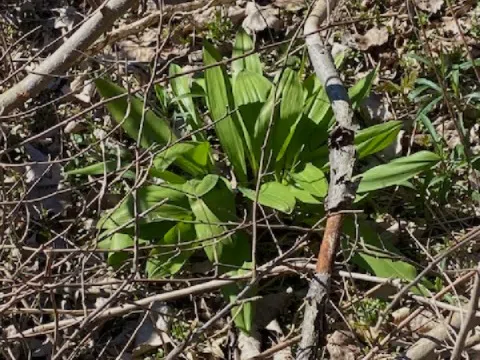
The following article was written by Jim Knickelbine.
I often feel as though spring completes the ecological circle in terms of habitat restoration. I live on land that was purchased by my grandfather 80 years ago. Grandpa talked a lot about loving nature- he considered the forest his cathedral. Although he appreciated it to some extent, he was a “practical” man and drove the land hard, getting as much as he could out of it. First potato farming, then mining for gravel- he saw to great changes in the landscape. The grandsons who now reside would rather try to encourage a more natural result on the 20 acres that remains.
The process of such restoration begins with assessment of what’s left. In the last 30 years, the property has been overrun by all sorts of invasive plants. All of them are on the least wanted list- Eurasian honeysuckle, common buckthorn, garlic mustard, dame’s rocket, reed canary grass- all are abundant. I think our family land is the most invaded place I’ve seen. But it’s not enough to throw up our hands and give up. I really treasure birds and other wildlife, but it’s not enough to just watch them and record their presence. If one cares about birds, one must do something about it, something that helps them. However, that attitude comes with a large workload.
Winter is a good time to remove invasives if the weather cooperates. I try to set reasonable goals, say, the removal of one large honeysuckle each day. That was the initial goal, but once one has started, the work usually entails at least an hour or two of chainsaw work, with a touch of herbicide on the stumps. This year, about two acres was treated.
After that, one can deal with the brush piles that result. At this phase the property looks like a war zone, but I can live with brush piles. Spring, which is less conducive to invasives work, is inventory time- and the results are often surprising. Beneath the invaders, native wildflowers are often lurking, and it’s so good to find them – remnants of a forest many years past. Wild leek, bloodroot, trout lily, mayapple, skunk cabbage, and others have somehow managed to hang on. A neighbor has a steep hillside covered with oaks and basswood, and some of those have also spread to where the gravel pit used to be. And choke cherry and wild apple. This gives a basis for restoration, and I’m challenged to determine how to best compliment them.
Now, it’s planting time, and bur oak, sugar and red maple, and serviceberry are this year’s selections. I’ve suddenly had to increase the pace of planting with the onset of warm weather. After planting, the trees must be caged- lest deer make a snack of them. Then watering as needed- I dearly hope against a dry summer.
In fall, a new area is selected, and invasive removal begins again. The work is good for the land and good for me. My work is not too intense but leaves me with a good feeling. Physical work releases those feel-good hormones which have a part in keeping me coming back day after day. I’ll never live to see the full result of the work, but I’ll know I gave it my best try.









